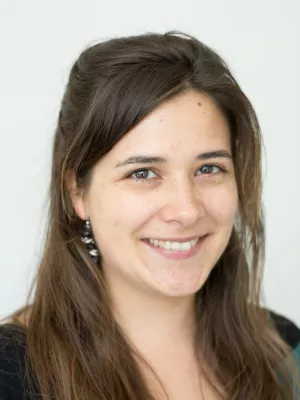
Maria Blasi Romero
Forskare

Seed-coating of rapeseed (Brassica napus) with the neonicotinoid clothianidin affects behaviour of red mason bees (Osmia bicornis) and pollination of strawberry flowers (Fragaria × ananassa)
Författare
Summary, in English
Neonicotinoid insecticides applied to flowering crops can have negative impacts on bees, with implications for crop pollination. To assess if exposure to the neonicotinoid clothianidin via a treated crop (rapeseed) affected bee behaviour, pollination performance (to strawberry), and bee reproduction, we provided each of 12 outdoor cages with rapeseed (autumn-sown plants complemented with a few spring-sown plants to extend the flowering period) grown from either clothianidin-treated or untreated (control) seeds, together with strawberry plants and a small population of red mason bees (Osmia bicornis). We expected clothianidin to reduce bee foraging activity, resulting in impaired strawberry pollination and bee reproduction. During the early stage of the experiment, we observed no difference between treatments in the length of entire foraging trips, or the combined number of rapeseed and strawberry flowers that the bees visited during these trips. During the later stage of the experiment, we instead determined the time a female took to visit 10 rapeseed flowers, as a proxy for foraging performance. We found that they were 10% slower in clothianidin cages. Strawberries weighed less in clothianidin cages, suggesting reduced pollination performance, but we were unable to relate this to reduced foraging activity, because the strawberry flowers received equally many visits in the two treatments. Clothianidin-exposed females sealed their nests less often, but offspring number, sex ratio and weight were similar between treatments. Observed effects on bee behaviour appeared by the end of the experiment, possibly because of accumulated effects of exposure, reduced bee longevity, or higher sensitivity of the protocols we used during the later phase of the experiment. Although the lack of a mechanistic explanation calls for interpreting the results with cautiousness, the lower strawberry weight in clothianidin cages highlights the importance of understanding complex effects of plant protection products, which could have wider consequences than those on directly exposed organisms.
Avdelning/ar
- Syngruppen
- Funktionell zoologi
- BECC: Biodiversity and Ecosystem services in a Changing Climate
- Biodiversitet
- Biodiversitet och bevarandevetenskap
- Centrum för miljö- och klimatvetenskap (CEC)
- Lunds universitets hållbarhetsforum
Publiceringsår
2022-09
Språk
Engelska
Publikation/Tidskrift/Serie
PLoS ONE
Volym
17
Issue
9 September
Dokumenttyp
Artikel i tidskrift
Förlag
Public Library of Science (PLoS)
Ämne
- Ecology
Status
Published
Forskningsgrupp
- Lund Vision Group
- Biodiversity and Conservation Science
ISBN/ISSN/Övrigt
- ISSN: 1932-6203